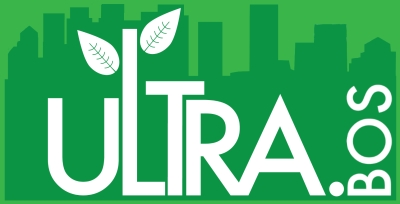Intellectual Merit:
This project studies the urban-to-rural gradient from Boston’s urban core 100km west to the Harvard Forest LTER, a Core Wildland Site of NEON. We use the concept of “Urban Metabolism” as a framework to quantify the current state and future sustainability of regional urban and natural systems. “Urban metabolism” refers to stocks, fluxes and transformations of mass and energy within an urbanized subregion and across its boundaries. We are measuring and modeling the interactions of humans, plants, animals, physical processes, urban infrastructure and marine and terrestrial ecosystems, focusing initially on one important component: carbon flows associated with biological and anthropogenic activity. Carbon is a principal currency connecting human and natural systems. By developing an integrated framework for measuring and modeling flows of carbon to and from the matrix of ecological and human systems, we are working to advance the science beyond inventory approaches, developing analytical tools that integrate otherwise disparate components of natural and social science, and defining natural and anthropogenic threats to sustainability. Our team builds on and extends an established University-US Forest Service collaboration. Our project has three major components:
- We combine spatiotemporally explicit socioeconomic and biophysical data with carbon exchange models to create a Coupled Human-Natural (CHN) framework, implemented as a set of closely linked models for carbon flows in the built, vegetated and marine environments, the ecological systems of the region, and the atmosphere. The research question for this component is: how do humans, their infrastructure and activity, and natural processes interact to produce geospatially and temporally resolved exchanges of CO2?
- We are interactively testing and refining the CHN framework using measurements of the biophysical environment (remote sensing, plant physiology, CO2 concentrations) coupled with data on the built environment (energy use, building data, transportation), economic activity, and demographics. The models will be validated using continuous atmospheric observations and atmospheric transport modeling combined with our knowledge of temporal and spatial variations of key drivers (such as income, housing, commuting patterns, and population (1/3rd of Boston’s population are students, who move annually)). The CHN will enable us to quantify physical, climatic, ecological, and socioeconomic drivers of carbon exchange and anthropogenic energy use at high temporal and spatial resolution.
- We are working to apply the CHN framework as a tool for societal decision-making. Our work will identify and quantitatively link the economic, ecological, technical and behavioral factors that control urban metabolism, allowing us to forecast, test and refine hypotheses about policy options for Greater Boston.
This exploratory study will define relevant geospatial boundaries and create a conceptual framework and measurement strategy for long-term monitoring, experiments, modeling, information management, and education/outreach in a full ULTRA project.
Broader Impacts:
Quantifying climatic, ecological, and socioeconomic drivers of carbon exchange and energy use will allow us to forecast carbon flows and evaluate policies aimed at altering flows consistent with social goals. For example, this research will help evaluate options for achieving Boston’s emissions reduction targets. More broadly, it provides tools for larger-scale efforts like the Massachusetts Global Warming Solutions Act, the Regional Greenhouse Gas Initiative, and the American Clean Energy and Security Act. Because the framework includes natural and social science determinants at fine spatiotemporal resolution, we can evaluate options that cannot be assessed within a single discipline and infer unintended consequences for the human population. For example, this CHN framework can be used to evaluate how urban forestry, changes in rooftop albedo, and changes in transportation infrastructure can offset carbon emissions, or to examine how transportation options affect both carbon emissions and the economic opportunities available for urban dwellers. A full ULTRA will more thoroughly characterize the socioeconomic levers by which such policy can be enacted, and the socioeconomic effects. Through focused collaboration, we will engage the City of Boston, the Boston Metropolitan Planning Organization (164 municipalities), and community stakeholders across regional municipalities.
To see the Boston Ultra-EX web blog, please go to http://bostoncarbon.org/.



